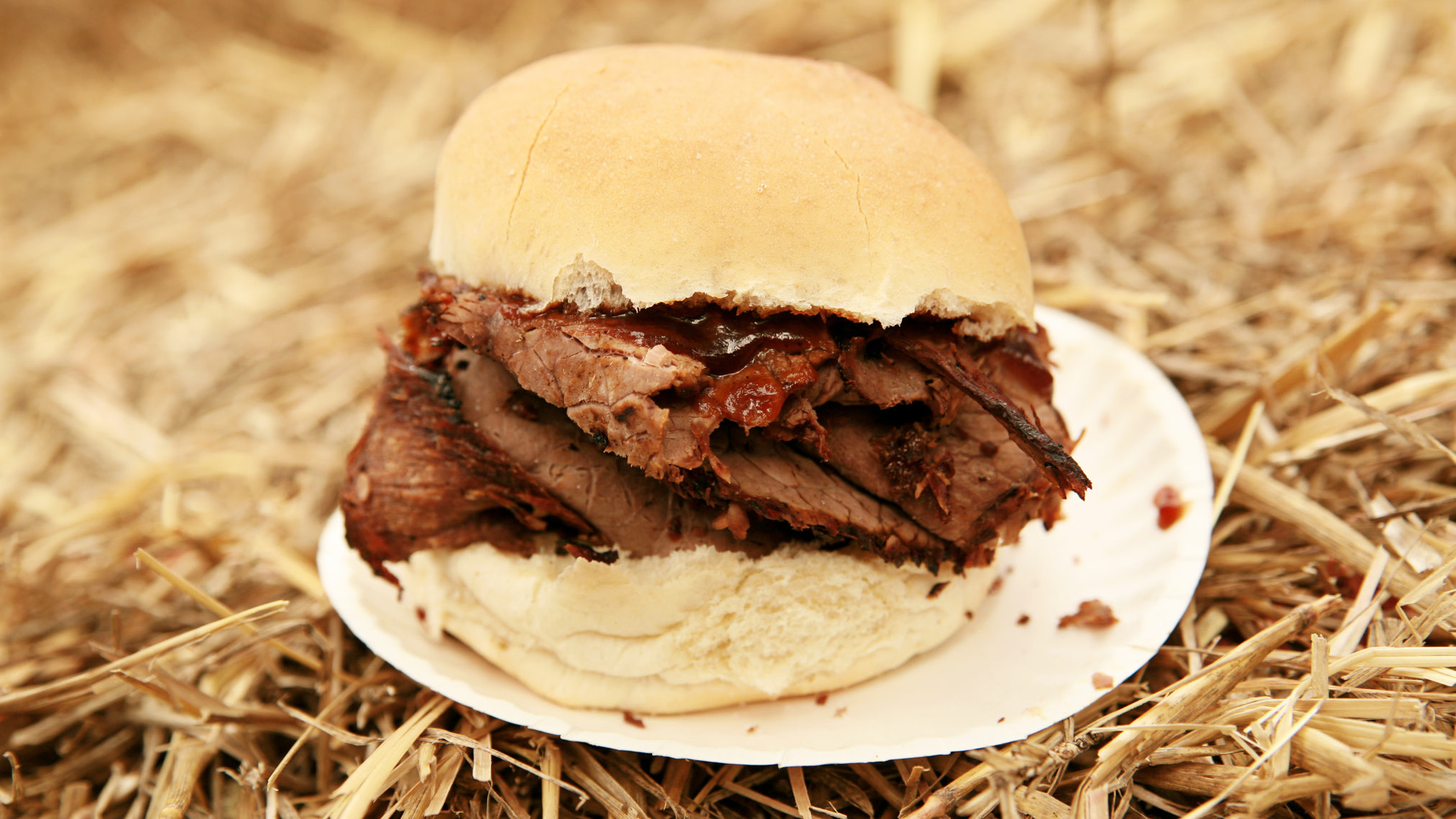Making Up For Lost Time With The Baltimore Pit Beef
Pit beef is the greater Baltimore area's answer to barbecue. The charcoal-cooked, thinly sliced roast is as iconic among Maryland carnivores as Italian beef is among their Chicago counterparts, but I only stumbled upon it by happenstance a few years ago—and, for a moment I was a bit resentful of its very existence.
Long story short: When I was growing up, one of my favorite fast-food burger joints was a chain called Gino's, launched in the 1950s by Baltimore Colts defensive end Gino Marchetti (who died a little over a month ago) and a few partners. Until the mid-'80s, there was a Gino's franchise in my tiny hometown of Haledon, New Jersey, so I probably ate there more than I did at McDonald's from birth through age 12. At some point, the chain all but disappeared from existence. But nine years ago, I learned that Gino was revived—the difference was that the new iteration would use more premium ingredients and take some care in crafting its menu for modern tastes.
At the time, I drove between New York and D.C. quite a bit and would always let my nostalgia get the better of me, necessitating a stop at the Aberdeen, Maryland location. That is, until I rolled up to the eatery on one particular trip about three years ago and learned that it had suddenly closed (it was always empty, so this shouldn't have been a huge surprise). A sign in the papered-up window read: "Coming soon: Chaps Pit Beef."
What is this pit beef, I asked myself, and who do this Chap person think they are, pushing out my beloved Gino's?! Google set me straight. Pit beef is a local institution concentrated along eastern Baltimore's Pulaski Highway, of which Chaps is one of the O.G. purveyors. So intrigued I was that I had to investigate the flagship site. It made me a true believer in the Beef that is Pit.

The experience underscored how much damage my erstwhile vegetarian lifestyle (1990-2010) had done. I may have never been a Marylander, but I'm sure I probably would have discovered this gift from the gods of Mid-Atlantic cuisine much earlier in life had I not been avoiding meat.
Once pit beef was on my radar, it suddenly seemed like it was everywhere. Even the cocktail reception bites at a conference I attended at the Hyatt Regency Baltimore included pit beef sliders. And if I had paid closer attention to John Waters movies, I would've realized that the titular character's grandmother in 1998's Pecker ran a pit beef stand.

"It seems to be very regional," Mark Lee, owner of the nearly 30-year-old pit beef destination Charcoal Deli in Cockeysville, Maryland, tells me. "From Baltimore, we go a little bit north into Pennsylvania and a little south into Virginia, but we don't see it much anywhere else. You have your pitmasters all over the world, but as far as the bottom-round pit beef, that's Baltimore."
I'm still trying to put my finger on what I find so appealing about pit beef. I think it has something to do with the way it seems, at least to me, to be the nexus of a Sunday roast and Southern BBQ—roast beef meets brisket, kind of.
Typically, the cooks prepare a large slab of bottom round over charcoal, mostly in indirect contact with the flames. "The weapon of choice is an open pit with hardwood charcoal, none of those briquettes or anything like that," Lee explains "It's more of a smoking—it's not directly on the heat, it's next to the heat as long as possible. We run it over the top [of the fire] to give it a little char."
I gave up roast beef sandwiches a long time ago because they're usually too chewy. It kind of defeats the purpose of a sandwich when said sandwich requires a knife and fork. Taste-wise, pit beef itself is more roast beef, but the texture definitely tilts more toward brisket. The sauce, onions and horseradish—personally, I like to add pickles too—all merge with the meat juices to create an all-new symphonically delicious, tangy entity that gets absorbed into the hamburger-style bun.
The meat cooks for a total of about six hours, only about 30 minutes of which is spent over direct heat at Charcoal Deli. There's nothing in the way of rubs or the like—it's best when it's just left alone and the charcoal is allowed to do its thing. Expect to find it served medium-rare, sliced paper-thin, and loaded on a bun with the most popular accoutrements—horseradish, barbeque sauce and onions—available at the guest's discretion. Coleslaw, tomato salad, fries and a cold lemonade frequently share a tray with the meaty main event.
If you find yourself in or around Charm City, or if you just happen to spend a lot of time driving up and down I-95 across the Chesapeake region, you'll definitely want to map out a few pit stops (see what I did there?) along the way. I mean, how many crab cakes can a person eat anyway?
